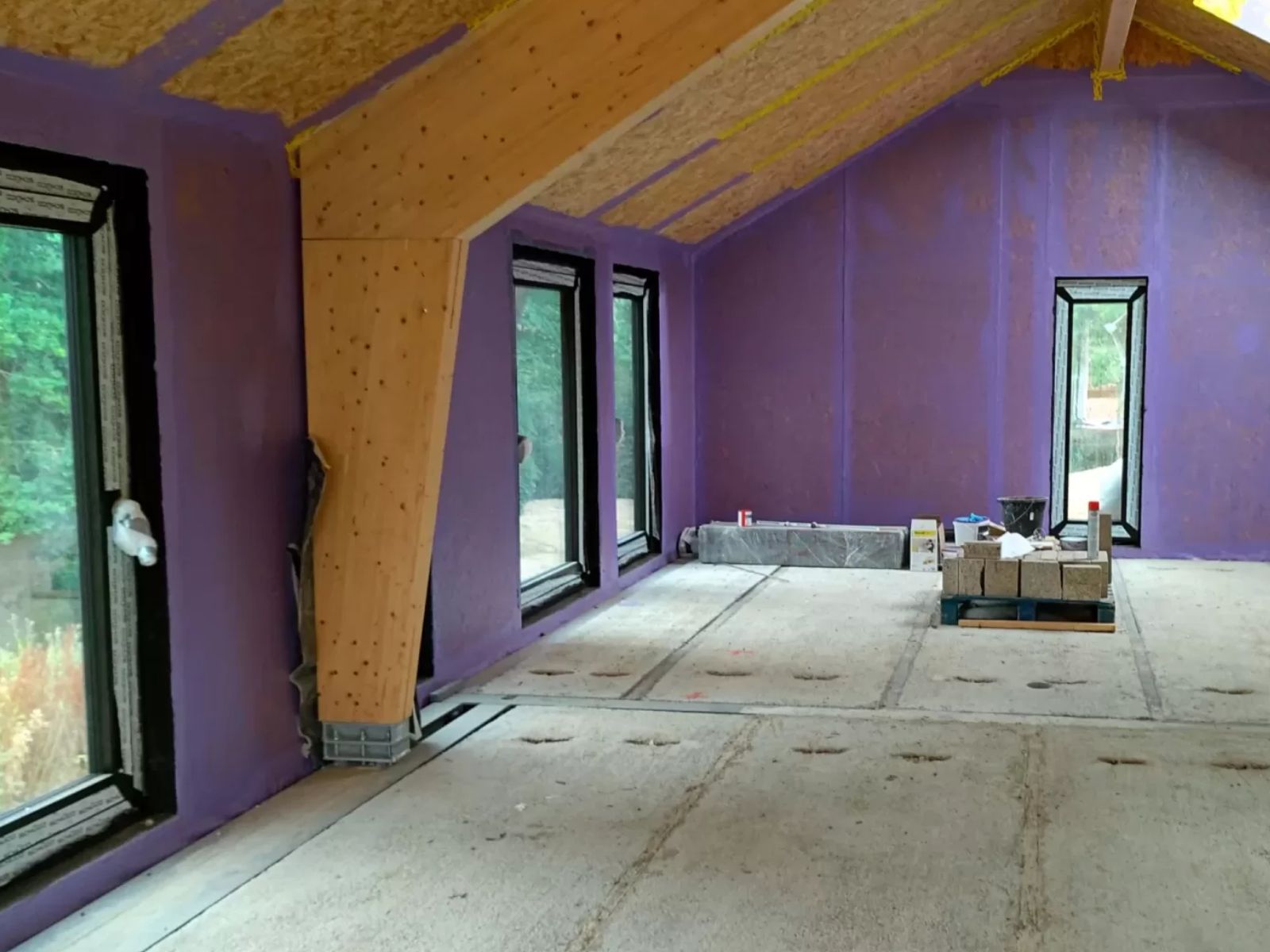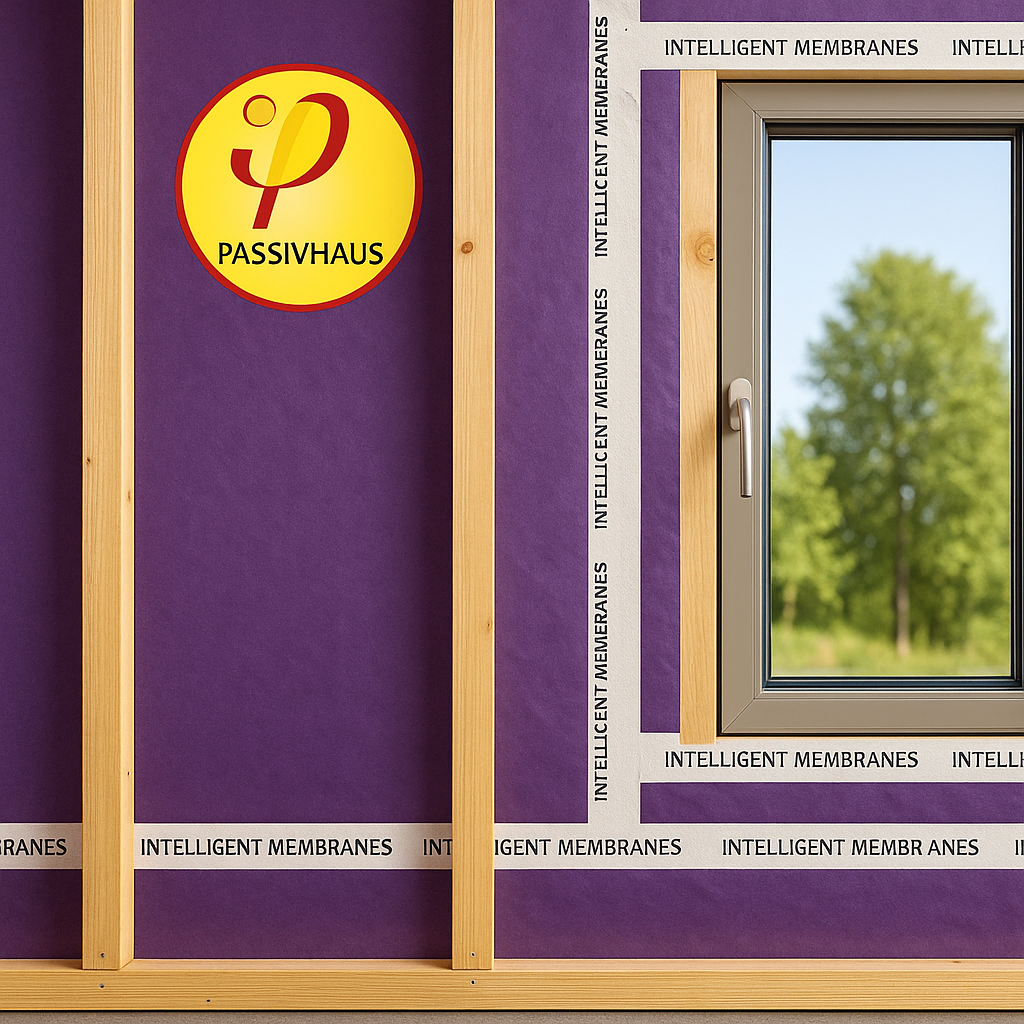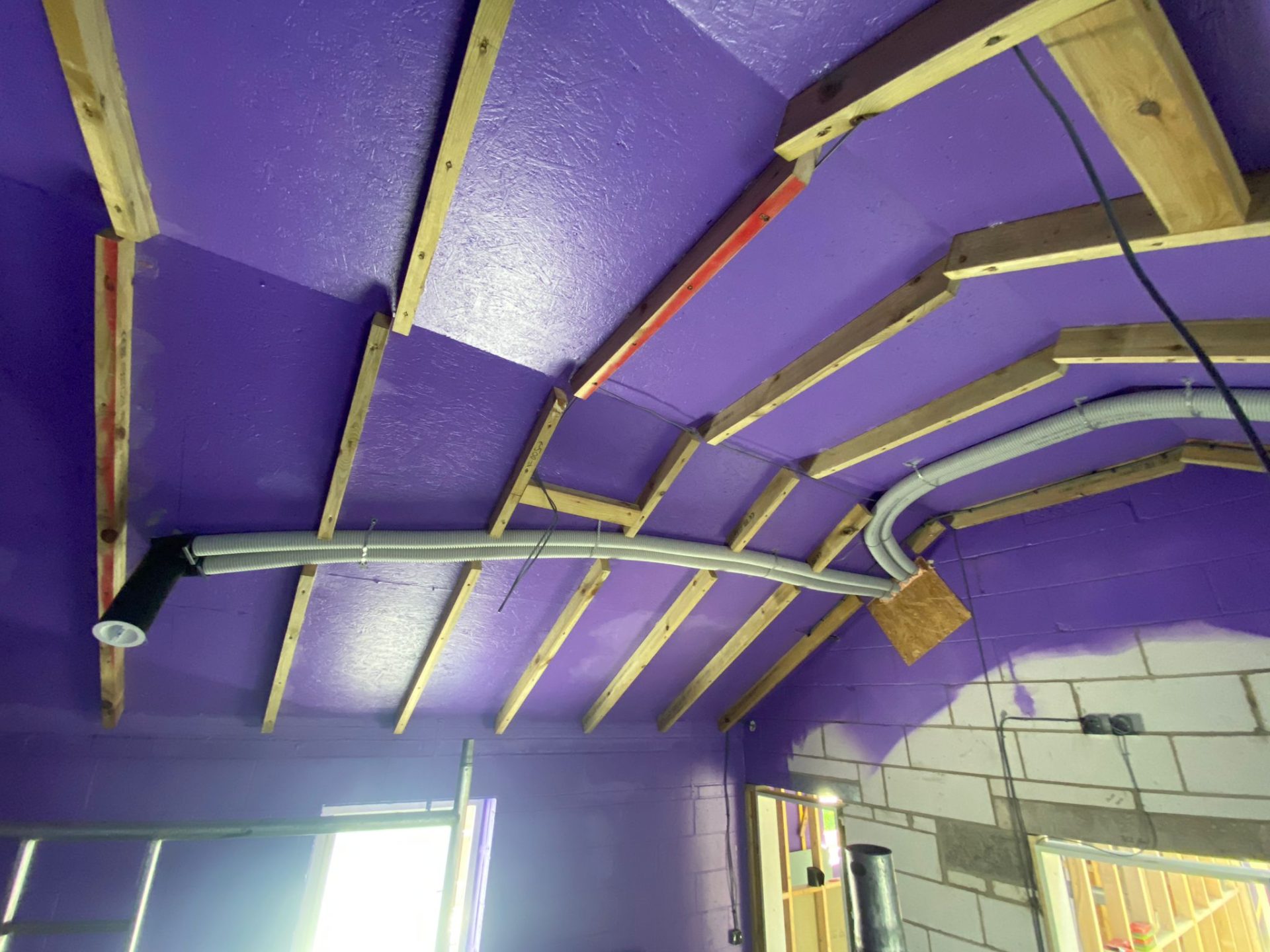PassivHaus
Passivhaus, also spelt Passive House, is an international standard for reducing the ecological footprint of a building by building them to be ultra-low in energy consumption.
Liquid Membranes & Passivhaus: Building a Better Future for the Next Generation
The Challenge We Face
Climate change, rising energy costs, and poor indoor air quality are shaping a global construction crisis. The buildings we construct today will define the world our children inherit tomorrow. Traditional building methods often result in energy-hungry homes, leaky structures, and wasted resources. That’s where liquid membranes and Passivhaus standards come together — providing a way forward that is both practical and planet-friendly.
What is a Liquid Membrane?
A liquid membrane is a high-performance coating applied directly to a building’s surfaces — walls, roofs, or floors — to create an airtight and weather-resistant seal. Unlike tapes, sheets, or grommets, liquid membranes:
-
Seamlessly cover complex shapes and awkward details.
-
Eliminate air leaks that waste energy.
-
Can also be vapour-open, allowing the building to ‘breathe’ while staying airtight.
-
Offer durability against moisture, wind, and even fire (in the case of Passive Purple External – Class B Fire Rated).
They are applied like a paint, but engineered to perform as part of the building fabric for decades.
The Passivhaus Standard
Passivhaus (or Passive House) is the world’s most rigorous building performance standard. It focuses on creating buildings that require minimal energy for heating or cooling while maintaining exceptional comfort and indoor air quality. The key pillars of Passivhaus are:
-
Airtightness – stopping unwanted drafts and energy loss.
-
Thermal Insulation – keeping heat where it’s needed.
-
High-Performance Windows & Doors – controlling solar gains and losses.
-
Mechanical Ventilation with Heat Recovery (MVHR) – delivering fresh, filtered air while recycling heat.
-
Thermal Bridge-Free Construction – avoiding hidden cold spots that cause mould and heat loss.
Where Liquid Membranes & Passivhaus Meet
Liquid membranes like Passive Purple are game-changers for Passivhaus builds. Airtightness is one of the trickiest Passivhaus requirements to achieve, especially around junctions, penetrations, and irregular surfaces.
Liquid membranes solve that problem by:
-
Creating continuous airtight layers without gaps.
-
Reducing the time and cost of installation.
-
Adapting to retrofits and new builds equally well.
-
Maintaining airtightness over the lifetime of the building.
The result: easier Passivhaus certification, fewer call-backs for leaks, and buildings that perform exactly as designed.
Why This Matters for the Next Generation
By using liquid membranes within Passivhaus-standard builds, we are doing more than hitting energy targets — we’re creating legacy buildings that:
-
Cut carbon emissions drastically, slowing the pace of climate change.
-
Slash energy bills for families, reducing fuel poverty.
-
Improve indoor health with cleaner air and stable temperatures.
-
Protect against future regulations, ensuring homes remain compliant for decades.
-
Inspire the industry to adopt smarter, more sustainable practices.
Every building built this way is a gift to the future — giving the next generation homes and schools that are healthier, more resilient, and kinder to the planet.
Our Commitment
At Intelligent Membranes, we believe that sustainability isn’t a marketing choice — it’s a moral one. Our liquid membranes are engineered for performance, durability, and environmental responsibility, helping architects, builders, and developers deliver the next wave of future-ready buildings.
We work with those who share our vision: to make airtight, sustainable construction the norm, not the exception.
Because the buildings we create today will be the air our children breathe tomorrow.
-
Our Sectors
Our breadth of knowledge and experience means we are well-placed to deliver exceptional eco-conscious products suitable for a variety of applications directly to you.
-
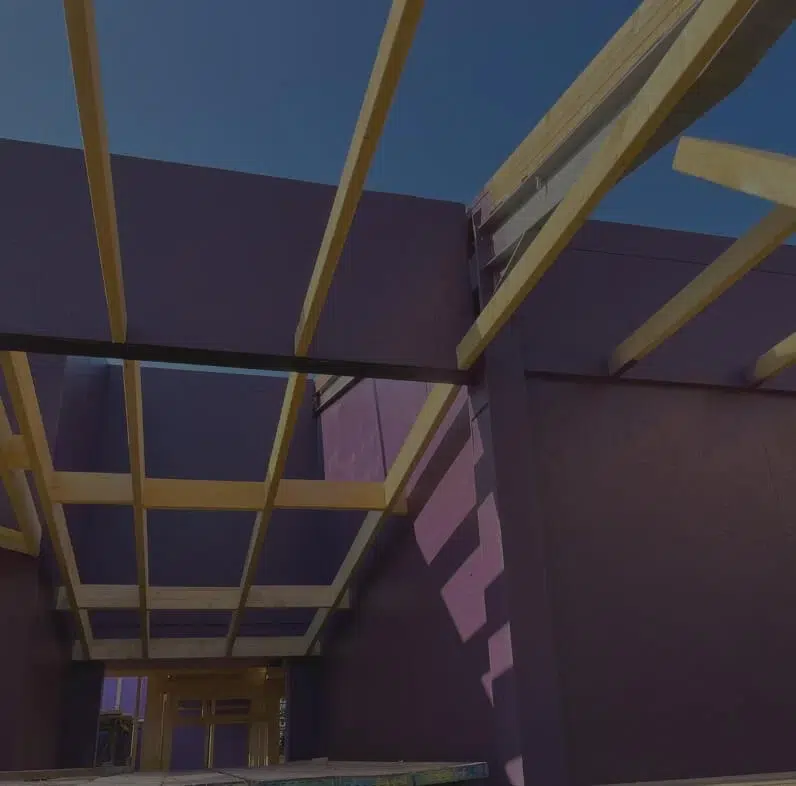
Self Build
-
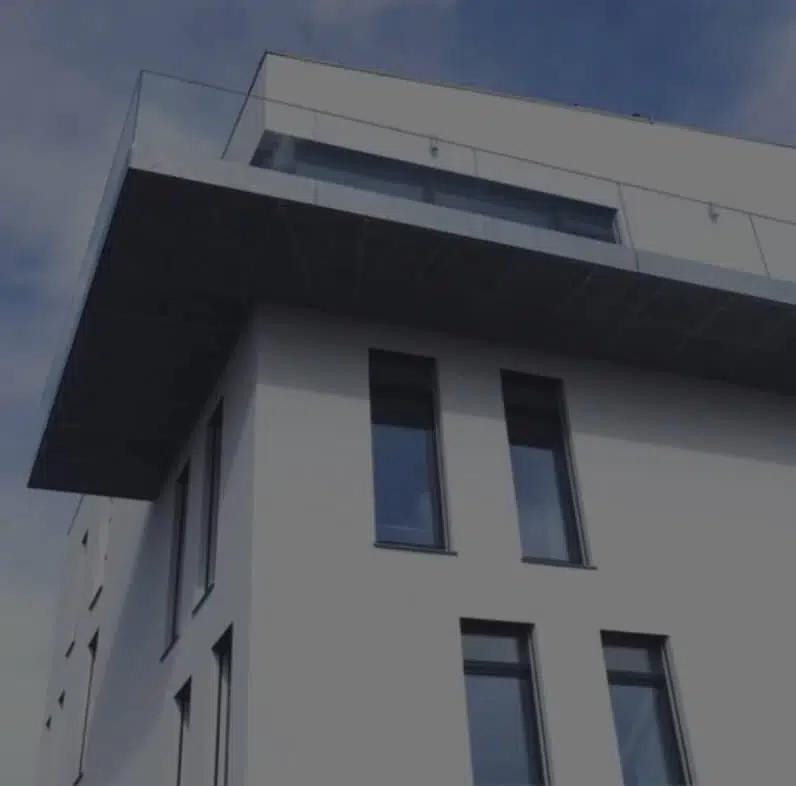
Commercial Conversions
-
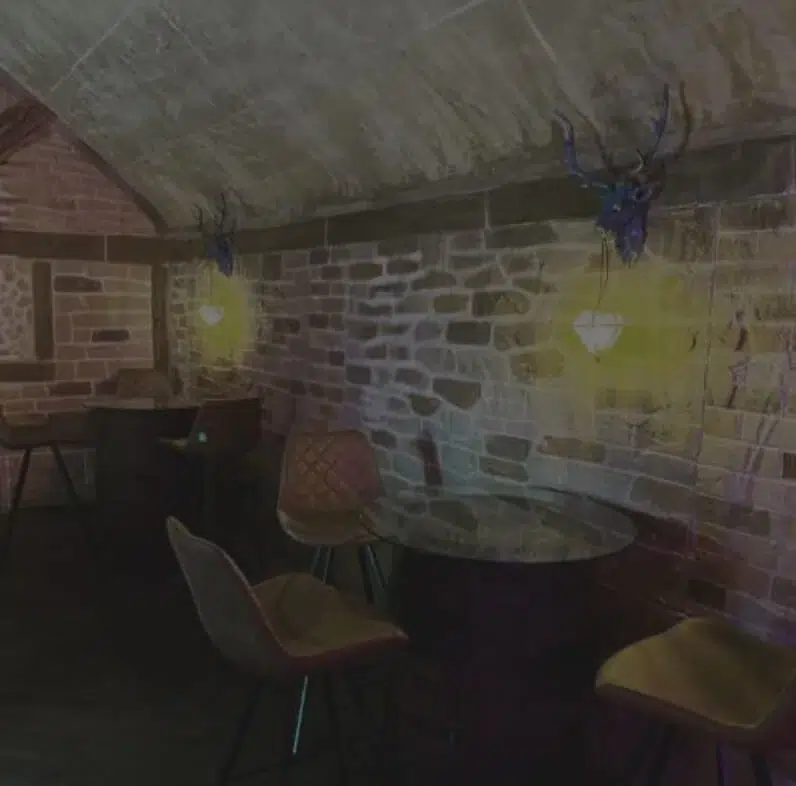
Retrofit / Heritage
Internal Airtight Paint
Fire Class C – SL, d0
ASTM Fire Class A
EN 13501-1:2018, cl. 11
When applied, the airtight liquid vapour control increases the lifespan of building components whilst simultaneously reducing energy consumption which in turn, saves you more money.
Passive Purple Internal has a BS Fire Class C rating unlike our competitors that only have a fire class E rating! Meaning the competition will burn like hell!

-
Internal
 Colours
Colours
AvailablePassive Purple – Airtight Paint (11.4kg) – Spray / Roller Applied
Spray/Roll Enquire Now Below Add to basket -
Internal
 Colours
Colours
Available33%Off!Passive Purple Brush – Airtight Paint 6.9KG
Brush $218.05 Add to basket -
Internal

Airtight White – Vapour Control Paint (11.4kg) – Spray / Roller Applied
Spray/Roll $258.97 Add to basket -
Internal
 33%Off!
33%Off!Airtight White Brush – Home Pack (6.9kg) – Vapour Control Paint – Brush Applied
Brush $123.77 Add to basket -
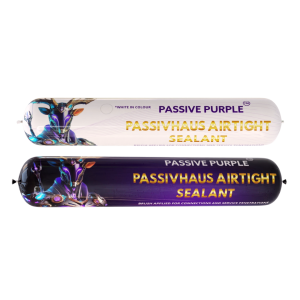
Passivhaus Airtight Sealant – 600ml
Enquire Now Below From £12.00 + VAT Select options This product has multiple variants. The options may be chosen on the product page
External Airtight Paint
Fire Class B – S1, d0
ASTM Fire Class A
EN 13501-1:2018, cl. 11
Passive Purple External is a ready-to-use facade waterproof membrane.After application with an airless spray device or paint roll, it dries to a durable, flexible, watertight, UV resistant and damp-open membrane.
Passive Purple External has a BS Fire Class B rating unlike our competitors that only have a fire class E rating! Meaning the competition will burn like hell!

-

Passivhaus Airtight Sealant – 600ml
Enquire Now Below From £12.00 + VAT Select options This product has multiple variants. The options may be chosen on the product page
Passivhaus standards
This performance-based energy standard has been around for decades, although it’s been thrust into the zeitgeist more recently as a result of global commitments to the environment. It hosts a number of benefits such as improved air quality, thermal comfort, self-maintained moisture and humidity levels, increased space and increased daylight.
Although marketers of this concept often point to high-end projects to show off the efficiency of the Passivhaus strategy, the reality is that all builders can benefit from the Passivhaus standards. You don’t have to be “high-end” to be eco-conscious and build smarter buildings.




